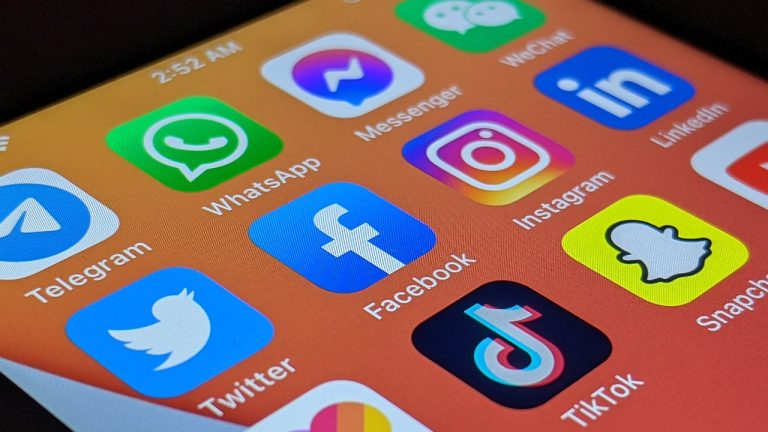Social media technology has assiduously assimilated into our everyday lives. What started as social media channels to communicate has now developed into an omnipresent force that affects nearly every part of our lives.
According to a Statista report, around 5.17 people worldwide are using social media. It accounts for 63.7% of the world’s population. Moreover, internet users spend an average of 151 minutes a day on social media and messaging applications. Compared to 2015, the time has increased by 40 more minutes.
Social media influences our ideas, actions, and relationships in subtle ways that we may not even be aware of.
In this article, we will look at some ways in which it is impacting our daily lifestyles and what can be done about it.
Morning Rituals: The Social Media Scroll
Many people start their days with a short look through their social media accounts rather than having a cup of coffee. It has become customary to check postings, updates, and alerts first thing in the morning. This seemingly innocuous habit has a bigger effect than it first seems.
Social media provides a variety of news, viewpoints, and personal updates, acting as a portal to the outside world. But it also establishes the tone for the day, frequently determining your priorities, attitude, and mood.
As noted in a Metro article, your brain goes through Delta, Thera, Alpha, and then Beta waves as you wake up. Science indicates that your brain cycles through each of these brain wave patterns before entering Beta.
However, when you use social media first thing in the morning, it bypasses these phases and directly goes through the Beta waves. Thus, you practically force your brain to go directly into Beta waves and set the tone for additional stress throughout the day.
How many people use social media as soon as they wake up?
When it comes to going to sleep and waking up, about 4 out of 10 people utilize social media most of the time. It is usually the GenZs and millennials who use it more often during wake-up than baby boomers and adults.
Shaping Social Interactions
Social media has completely changed the way you engage and connect with one another. Although technology makes it easy to keep in contact with faraway friends and family, it has also changed the nature of interactions. Online interactions are gradually taking the role of in-person chats, as likes, comments, and shares have emerged as new sources of social capital.
This transformation has affected the perception of and appreciation for relationships. Genuine human engagement can occasionally be eclipsed by the demand for social media affirmation.
You may discover that you are devoting more effort to crafting the ideal post than to savoring the moment you are sharing. Social media encourages you to present an idealized image of yourself, creating a cycle of competition and comparison. As a result, you may start to feel inadequate, comparing your life to others’ highlights.
This has also led to an impact on the mental well-being of social media users, especially young adults. One such example is the use of Snapchat, which has become one of the most popular platforms worldwide. It was also expected to outperform TikTok to become the fastest-growing social media platform in 2023. Currently, there are around 432 million daily active Snapchat users as of the second quarter of 2024.
According to TorHoerman Law, this widespread use of Snapchat has led to numerous mental health issues. Many teens and young adults have suffered problems like eating disorders, social media addiction, suicidal ideation, etc. It is stated that the mental health impact arises due to the harmful content and opportunistic algorithms of these systems.
Many parents have even filed a Snapchat lawsuit against the company, blaming the company for their children’s mental health problems. They allege that the company has been using features and algorithms that make Snapchat addictive. For instance, its recent friend-ranking feature was scrutinized over mental health concerns.
Furthermore, your relationships may become more surface-level due to the continual barrage of material. People frequently exchange brief texts, emoticons, or memes in place of in-depth, important talks. Even while these exchanges can be enjoyable, they don’t have the same depth or emotional resonance as face-to-face contact.
According to survey data, 38% of participants from 48 markets say they prefer to connect on social media. Comparatively, 32% say they are indifferent, and only 30% say they prefer in-person encounters. This distribution points to a wide diversity of worldwide opinions about communication techniques. However, the concern is the growing preference for digital communication.
How does social media affect social relations?
Social media may improve and hinder relationship communication. Although it provides fresh avenues for communication and experience sharing, it may also result in miscommunications and divert attention from in-person conversations.
Social media replaces part of a child’s in-person interactions with classmates, which has an impact on social skills. This can lead to callousness in spoken communication and elevated anxiety in face-to-face interactions.
Influence on Consumer Behavior
The way you purchase and consume has also been slightly altered by social media. Advertisements, influencer endorsements, and product suggestions abound on social media sites, all aimed at persuading consumers to make certain purchases.
Since the distinction between sponsored posts and organic material is sometimes hazy, it can be challenging to discern between sincere endorsements and paid advertisements.
This continual exposure to materialism may cause one to make rash purchases. Products that people frequently see on their feeds tend to get purchased, especially if they are recommended by users they respect or follow. Social media algorithms are significant to this process because they present them with material based on their prior actions and interests.
How does social media impact consumer behavior?
Customers use likes, shares, and comments on social media platforms to determine the popularity and legitimacy of a product or service. This phenomenon is known as social proof. Purchase decisions can be strongly influenced by positive social proof.
Altering the Work-Life Balance
The distinction between work and personal time has also become more hazy due to social media’s pervasiveness in everyday life.
People’s professional and personal identities are becoming increasingly entwined as remote work and professional networking via social media continue to grow. Social media sites like LinkedIn have made it simpler to remain in touch with clients and coworkers. However, some have also made it more difficult to take time off from work.
You might be always receiving updates, texts, and notifications, which makes it hard to completely turn off from work. Burnout may result from this ongoing desire to be connected as you feel obligated to do so, even when you’re alone.
Furthermore, the work-life balance has become increasingly difficult to maintain as a result of the social media-fueled “side hustle” culture. Social media networks are widely used by people to advertise their brands, enterprises, and freelancing services.
This increases the pressure to be consistently engaged and visible online, even while it also presents potential for extra revenue and creative expression. As a result, people lead lives in which work and play are combined, making it difficult to find time for leisure.
According to ISACA, the use of social media can not only impact employees’ mental health but also lead to cybersecurity attacks. Social engineering and phishing attacks have grown on these platforms. Moreover, there is always the risk of some basic personal information being stolen from social media profiles.
Social media technology affects our everyday lives in a variety of subtle and strong ways. It is becoming an essential aspect of our daily lives, work, and interactions with the outside world.
Although there are indisputable advantages, there are drawbacks as well. Therefore, we need to use these platforms with caution. The first step to utilizing social media in a way that improves rather than decreases our well-being is realizing how it affects our lives.

